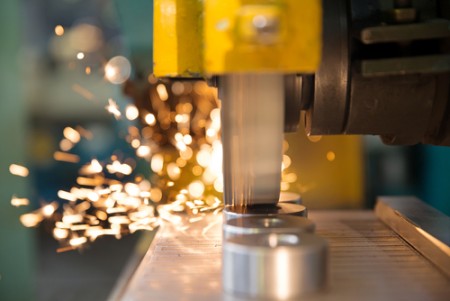March 21, 2016 – This is the third posting on 21st Century Tech blog by guest writer Paul Reyes-Fournier. He has served as the chief financial officer for social service organizations, churches and schools, and has created his own marketing firm, RF Media. Paul holds a Bachelor of Science in physics and an MBA.
Paul has speculated about the next Tony Stark and about 3D and 4D printing in past postings. We continue to welcome his contributions and your comments.
———-
According to Moore’s Law, computer processing speed doubles every two years or so. Some have expanded this rule to include other forms of technological advancement including manufacturing processes. Less than a century ago, the word robot had yet to be invented. Today manufacturing processes are dependent on programmable, automated machines that move components from the raw material stage through the supply chain and to consumers Like Moore’s Law computing evolutionary path, manufacturing is evolving at doubling rates and it is doing it through the Cloud, 3D printing and automated process improvements.
Cloud Manufacturing
The recent advent of cloud services has created new opportunities in manufacturing. Cloud-based technology started as a way to back up valuable documents offsite, allowing for sharing remotely. Software as a Service (SaaS) systems, which gave users that ability to share programs and software packages grew from these cloud platforms. Manufacturers are using the same ideas to share design and operations software making the processes scalable, centralized and affordable.
Recently Coca-Cola partnered with SAP (the software giant) to incorporate cloud-based enterprise resource planning into its manufacturing using a SaaS platform. Coke is planning to drive its entire global resource management system through an off-site platform. Smaller companies are beginning to enjoy these benefits as well. SaaS gives small companies and entrepreneurial startups a manufacturing advantage that allows them to compete in the global market traditionally only available to high cash flow corporations. In other words, the big ones.
Additive Technology
SaaS by itself is groundbreaking, but add to it additive manufacturing, commonly known as 3D printing, and the world opens for disruptive innovators. Additive manufacturing (AM) has been around a couple of decades, but in that time the technology has become cheaper and more widespread. Ten years ago a 3-D printer cost around $100,000 US. Today you can purchase a good one for under $1,000.
The result, smaller companies like wholesale jewelry manufacturer David Wilkinson can use a 3D printer to create handcrafted art. The printer has cut his production time down by a one-third.
New startups and small manufacturers can even rent a printer. The availability of this technology is changing the face of manufacturing, potentially creating a new engineering market in low-cost, idea-driven, mass customization.
Continuous-Flow Textiles
A significant portion of manufacturing revolves around textiles, including rubber and composite materials. This type of textile production is found in O-ring, biomedical and composite seals manufacturing. Starting and stopping this process is costly and potentially dangerous. Continuous-flow technology eliminates the need for the manufacturing process to stop. It uses super-heated reactors to maintain a constant flow of materials. This gives rise to instantaneous mixing and ultra fast molding.
Besides its use in extrudable textiles, this new technology is finding its place in the pharmaceutical industry because of its applicability to organic synthesis. Eli Lilly, the bio-pharmaceutical company, has already moved its manufacturing processes from batch-based to continuous-flow.
The reason bio-pharmaceutical firms can adapt to continuous flow is because there are similarities in the manufacturing process to that done in textile production. Both use base materials to which they add active ingredients. This technology is adaptable to other types of manufacturing and there should be many more examples of its use in the coming decade.
Fuzzy Hierarchies
Speed, cost and precision are all parts in manufacturing processes. Harder to evaluate is the human influence. Ergonomics, the science of improving the physical environment of the workplace, play a significant part in determining the final manufacturing cost. Human injury, delays and inefficiencies impact the end product.
Hierarchical fuzzy axiomatic design (fuzzy)is a new methodology for making decisions on ergonomic factors. What does fuzzy do? Instead of applying a traditional decision-making model, fuzzy applies relatively complex math to manufacturing decisions that are not specified in processes.
Because this analytical technology is relatively new and intricate, large companies and governmental entities like the U.S. Department of Energy are using fuzzy in their delivery service decision-making process. Doing this allows them to add the human aspect to decisions and may be even more important to manufacturing than all the other technological innovations previously described.









